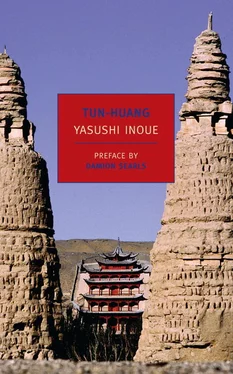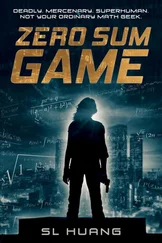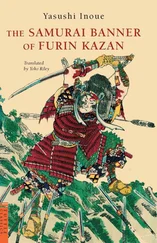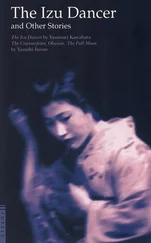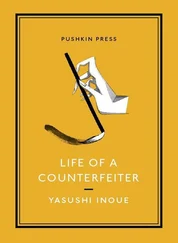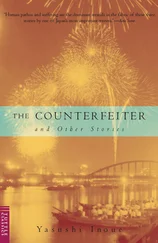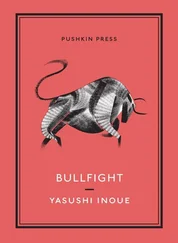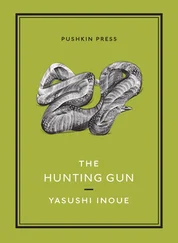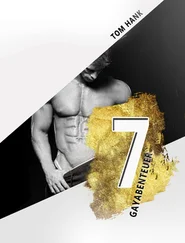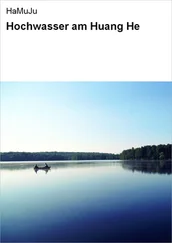In January 1043, a temporary truce was declared between Hsi-hsia and China. Six years had elapsed since Hsi-hsia invaded Sha-chou. Because of the prolonged war, both sides had suffered many casualties and exhausted their economic resources. Thus both powers were forced to negotiate for peace. There were, however, disputes over the peace treaty. Yüan-hao insisted upon retaining the title of emperor, but China would not consent to this. China demanded that Yüan-hao declare himself a vassal and that Chinese envoys be accorded similar treatment to those from Khitan. In return, China promised to send Hsi-hsia one hundred thousand bolts of silk and thirty thousand pounds of tea annually. After much negotiation, Yüan-hao finally agreed to acknowledge vassalage to China in form only, demanding in exchange double the amount of silk and tea offered by China. Yüan-hao had yielded an empty title for material profit.
In any case the war between the two countries had come to an end for the time being. When peace returned, Yüan-hao turned his attention to spreading Buddhism. As a result temples and monks were patronized, but all Buddhist scriptures and texts were taken away and stored in the capital, Hsing-ch’ing. From the Sha-chou area, camels laden with sacred scrolls headed east every day. In the summer of the peace treaty, the Three Realms Temple was restored, many monks came to take up residence, and the restoration of the Thousand Buddha Caves was begun.
There were Chinese as well as Hsi-hsia monks at the Three Realms Temple. The restoration of the Thousand Buddha Caves was completed in five years and a magnificent memorial service was held in the largest cave designated as the main Buddha Hall. Hundreds of male and female disciples gathered from the seventeen temples of Sha-chou, and people from all over Central Asia came to observe the magnificent ceremony.
On the day of the memorial service, a certain clerk named Fan, sent from Hsing-ch’ing, discovered several unrestored caves on the north side and ordered those in charge to see to their restoration.
Work on the grottoes was to commence immediately. Just as the restoration was about to begin, a monk from Sha-chou came with the request that he be given the work for a particular cave. He promised to collect the necessary money and offered to provide the labor for the project. His request was granted, and the restoration of one grotto was assigned to him. The cave he had requested was on the lowest level of the three-storied grotto in the north section.
In the manuscripts at the Three Realms Temple documenting the restoration of the Thousand Buddha Caves, the priest’s name, the name of the restored grotto, and the reason for his request were listed. According to this, the monk had stated that during the Hsi-hsia invasion he and two fellow monks had sought refuge in this cave but, unfortunately, the two others had been hit by passing arrows and had died. The surviving monk said he wished to take this opportunity to work for the repose of his deceased friends’ souls.
Yüan-hao passed away at the age of forty-five in 1048. Twelve years had passed since his conquest of Central Asia and six years since the peace treaty with China. Up to the time of his death, Yüan-hao was addressed as emperor within his country.
Conflict between Hsi-hsia and China resumed in Emperor Shen Tsung’s reign, more than twenty years after Yüan-hao’s death. After Jen Tsung and Ying Tsung, the young, intelligent Shen Tsung had ascended the throne and immediately made preparations to regain the territories in the western frontiers lost to Hsi-hsia.
The incident took place at the time when Central Asia was awakening from the lull of thirty years of peace and was about to enter another period of warfare. A member of a Khotan caravan which had come to Sha-chou brought some gifts for donation to the Three Realms Temple, with the message that the items had been entrusted to him, with a request, by a former member of the Khotan royal family. The gifts were valuable Khotan jewels and woven material, and the request was that the Buddhist grotto, which the Khotanese king Li Shen-t’ien long before had had constructed, be restored, should it be in disrepair.
This messenger also brought another item with him. In a small package were a letter and a scroll.
The writer of the letter stated that fate had brought into his hands the family history of the Ts’ao dynasty, former rulers of Sha-chou. Since he had the opportunity, he wished to donate this and to hold a memorial service for the Ts’ao family. If services could not be held openly because the Ts’ao had been former rulers, he asked if they could be held in Li Shen-t’ien’s grotto. As Li Shen-t’ien’s daughter had been given in marriage to the Ts’ao family, there was some relationship between them.
The letter was also written in Hsi-hsia and in the horizontal writing of the Uighurs. The brushstrokes were bold and splendid. It seemed that the message had been repeated in three languages as a precaution, to ensure that it could be read by anyone who received it, since the writer knew nothing of the present situation in Sha-chou after the Hsi-hsia occupation. At the end the writer had merely signed it, “Chao Hsing-te, second-degree holder from T’an-chou of the great Sung Empire.”
As requested by the former member of Khotanese royalty, the Buddhist grotto of Li Shen-t’ien at the Three Realms Temple was immediately restored. And in compliance with the other request, the family history of the Ts’ao was placed on the altar and a memorial service conducted. As Chao Hsing-te had expected, the temple representative was reluctant to conduct services openly for the Ts’ao family. For that reason, no one but the temple monks knew that the scroll placed there was the Ts’ao family history.
In the family history scroll were the names of the eight rulers, beginning with Ts’ao I-chin, and going through Yüan-te, Yüan-shen, Yüan-chung, Yen-ching, Yen-lu, Tsung-shou to Hsien-shun, with their birth dates and their individual achievements given in great detail. At the end it said that the last ruler, Hsien-shun, had lost the battle with the Hsi-hsia and had perished on the front on the thirteenth day of the twelfth month in the second year of Ching-yu (1036). In addition to the section on the rulers was a note at the end concerning the accomplishments of Hsien-shun’s younger brother, Yen-hui. “A devout Buddhist, he gallantly refused to flee from the Hsi-hsia invasion, chose voluntarily to remain alone in Sha-chou, and took his own life by throwing himself into the flames.
“Within my narrow monks’ cell
The Buddha’s grace extends in all directions.
Within the cave the Three Worlds exist.
As a firm believer in Buddha’s teachings
I will greet all suffering
Just as I would the wind
That enters through the door.
Such were the words in the scroll. The date of his death, like that of his brother, was also the thirteenth day of the twelfth month in the second year of Ching-yu.
The Ts’ao family history scroll was honored in the grotto for only a single day, then it was immediately stored away with other scrolls and for years thereafter lay in darkness with them.
In the following centuries, the Sha-chou area changed hands and names several times. Under the Sung dynasty, it was absorbed into Hsi-hsia and lost its provincial name; in the Yüan era it was known again as Sha-chou. During the Ming dynasty it became Sha-chou Garrison, and then was known as the Tun-huang District during the Ch’ing dynasty. Tun-huang means large and vigorous, and the name had been used in ancient times during the Former and Later Han dynasties and the Sui dynasty, when the area served as the corridor through which western culture entered the east. After two thousand years, the name had been revived.
Читать дальше
